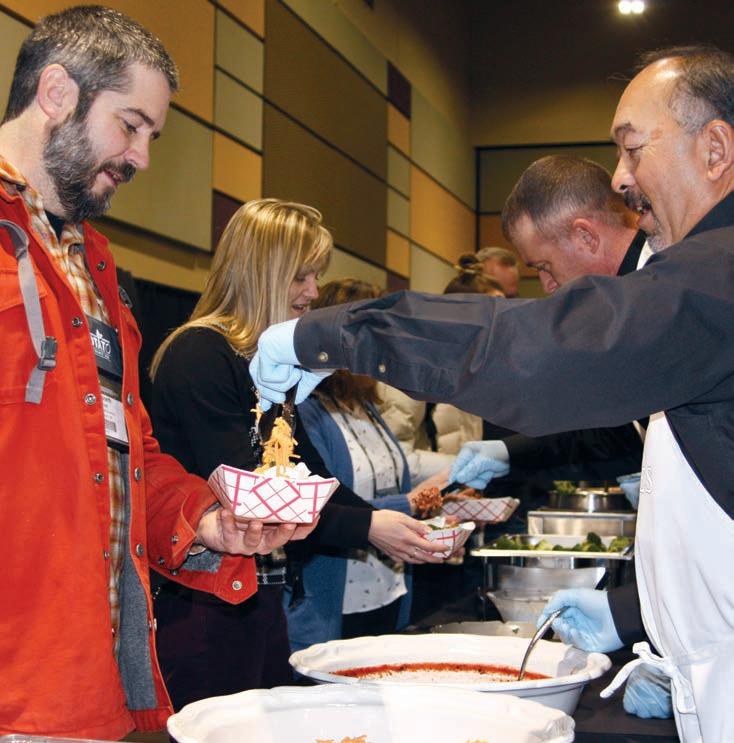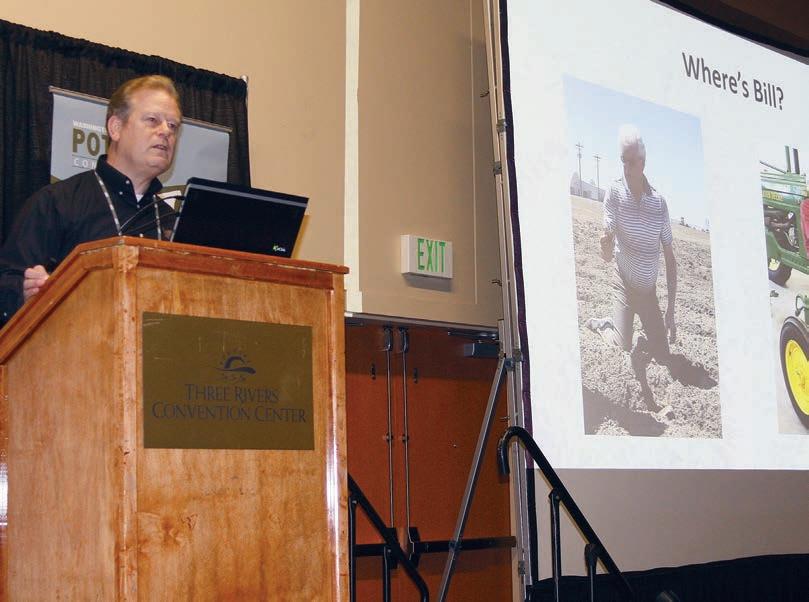
3 minute read
Does Early Planting Pay Off?
Story and photos by Denise Keller, Editor
The early bird may not always get the worm.
The effects of early planting and best management practices for seed were the focus of a well-received presentation at the Washington-Oregon Potato Conference, held Jan. 21-23 in Kennewick, Washington. Presenter Rick Knowles (pictured at top), a professor of horticulture at Washington State University, discussed the ways in which planting date affects crop growth and development, yield and quality.
Best Practices for Seed
Knowles opened the session by addressing recent issues with decreased stand establishment, saying that growers sometimes blame poor stand establishment on a bum seed lot.
“That could be true, but we find more often than not, that isn’t true,” Knowles explained. “It’s more likely how the seed was handled by both the seed grower and especially by the commercial grower, the cutting operation and the planting operation.”
Too often, seed is planted within 24 hours of being cut, which can be a recipe for disaster, Knowles said. Planting too soon after cutting increases the risk of microbial decay and reduced stand establishment, especially when planted early in the spring in cold, wet soil. Doing so inhibits the initial wound response and subsequent development of a suberized closing layer.
Explaining the physiology of wound response, Knowles said that wound healing produces superoxide radicals that are powerful antimicrobial agents, as well as hydrogen peroxide with its disinfectant properties. Interfering with the process increases the susceptibility of seed to decay.
Translating the science into management practices, Knowles said seed growers should condition seed by bringing the temperature up to around 42 degrees Fahrenheit for 10 days to two weeks before shipping. This gears up the seed’s metabolism to respond to wounding and primes it for sprouting.
He then reminded commercial growers to allow freshly cut seed to dry and begin to go through the initial wound response, which results in a suberized closing layer, before planting. Wait at least 48 to 72 hours after cutting, holding seed at 48 to 52 degrees with airflow, and then plant in soil above 45 degrees.

Kam Quarles, National Potato Council CEO, brings the latest updates from Washington D.C. to growers at the Washington-Oregon Potato Conference.

Dan Chin with the Oregon Potato Commission (right) adds the finishing touches to a baked potato for Ken Frost with Oregon State University.
Effects of Early Planting
Transitioning to the second half of his presentation, Knowles covered new research on how planting date affects the outcome of a crop.
In a three-year trial, Knowles and his team looked at planting dates between April 1 and April 29 for four cultivars: Russet Burbank, Ranger Russet, Clearwater Russet and Umatilla Russet. The growing season was kept constant at 147 days.
In short, they found that planting date affects the total time needed for a crop to mature, with later plantings finishing in fewer days than earlier plantings due to quicker plant establishment and exposure to more growing degree days. On the flipside, early planting results in delayed emergence because seed is planted into colder soils. And the crop is exposed to less heat during the season, giving plants less time to develop.
At the end of its 147-day season, the early-planted crop had greener vines, indicative of the immature crop below. Knowles reminded growers that the degree of vine senescence is a key factor to consider when choosing a harvest date. Planting date will affect the timing of tuber maturity at season end and thus reducing sugars and postharvest retention of process quality. The tubers from the earlier plantings had higher reducing sugars coming out of the field and built up more sugars during storage compared to the later-planted crop, Knowles reported.

Gary Roth, executive director of the Oregon Potato Commission (OPC), makes his debut at the Washington-Oregon Potato Conference after taking over for former OPC president, Bill Brewer, last May.
Considering that early-planted crops require more time for tubers to reach a physiological maturity that will store well, researchers tweaked the trial in 2019 to also evaluate the effects of extending the growing season for the early-planted crop to 168 days. This extra time in the ground was needed to adequately mature tubers for prolonged storage. However, extending the season also involved managing crop inputs, such as water and pesticides, longer and did not translate to increases in yield.
“While early plantings are necessary to get all the acres planted, growers should be prepared to manage earlier-planted crops later to achieve optimum maturity for full-season storage,” Knowles concluded.

